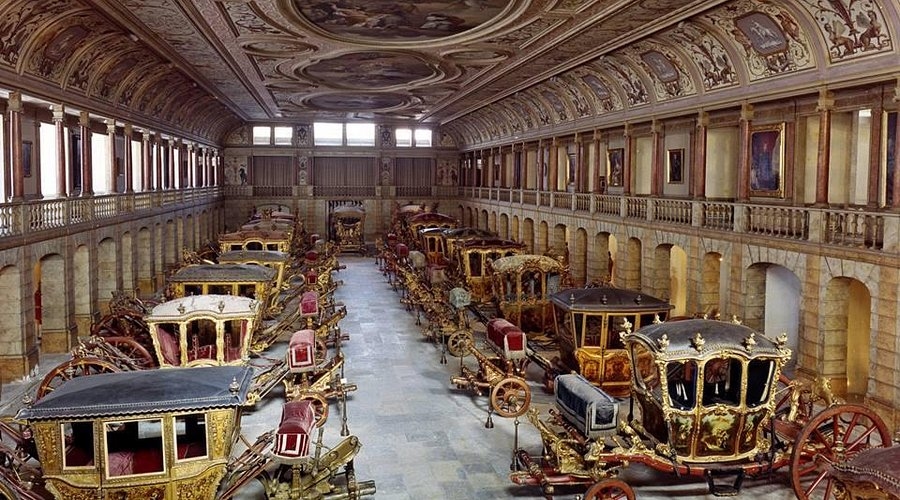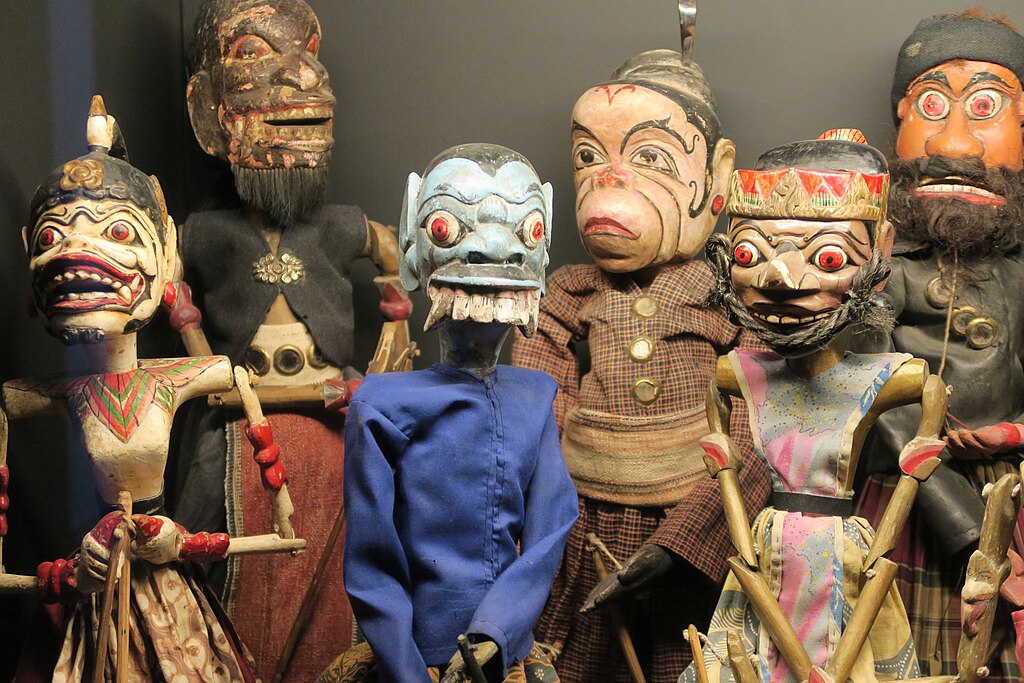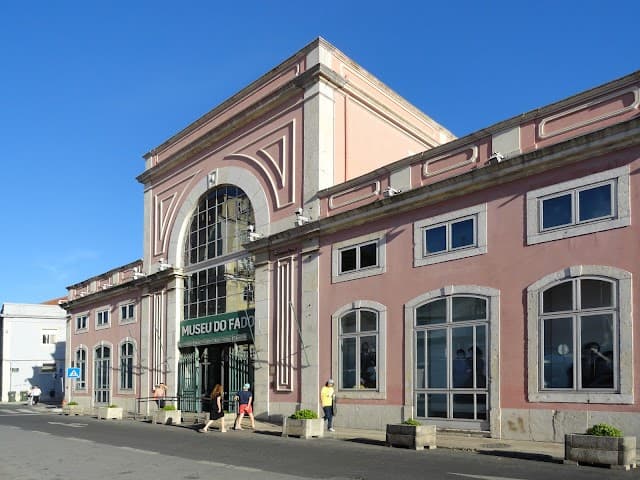
When we think of museums, we often imagine long silent halls, paintings we look at without daring to speak, and guards following us out of the corner of their eye. But in Portugal, museums have an entirely different flavour. Here, they sometimes smell of the sea, of polished wood, of aged leather… and even of grilled sardines ! From north to south, the country is full of quirky, playful, sometimes slightly eccentric museums that tell its story in their own way. Forget the clichés : make room for curiosity, creativity, a touch of fantasy, and above all, some really fun outing ideas !
Sardines in tins… but not only that
It’s impossible to start without mentioning one of Portugal’s most delicious symbols: the sardine. Yes, that famous one, the one you eat grilled during São João, that you see painted on walls or printed on t-shirts. It even has its own museum : The Fantastic World of the Portuguese Sardine, in Lisbon and Porto (and even in New York, yeah !).
Right from the entrance, the tone is set: bright lights, circus music and extravagant décor. We’re not in a classic museum, but in a real show. Here, the sardine is queen, celebrated through playful installations, colourful tins, and a scenography worthy of a vintage amusement park. Each sardine is decorated, illustrated, dated… and sometimes even personalised with your year of birth. Yes, you can leave with your own 1989 or 1992 sardine, in a limited edition! (but don’t worry, it’s just the tin that’s from that year, your sardines weren’t actually caught the year you were born !)
It’s kitsch, joyful, unapologetic and it works. This museum (or should we say this sensory, fish-based experience) enchants both children and adults, all fascinated by Portuguese ingenuity. Because behind the whimsy lies a true national pride : that of having turned an everyday product into a cultural icon.
The Puppet Museum, a guaranteed return to childhood
In Lisbon, nestled inside a former convent, there’s a place where the magic begins from the very first minutes: the Museu da Marioneta. If you think puppets are only for children, think again. This museum is a gem, poetic and surprising all at once.
You’ll find puppets from all over the world, traditional Portuguese figures, and characters from Asia, Africa and South America, each more expressive than the last. Some are centuries old, others look straight out of a Tim Burton film. The tour, cleverly designed, alternates between contemplative moments and interactive discoveries.
The most fascinating part? The collection dedicated to the Dom Roberto puppet theatre, a popular Portuguese art form embedded in the country’s collective memory. These small figures, animated in the streets or on public squares, used to make audiences laugh, cry and think. Watching them today, we realise those street performances were far more than mere entertainment: they were a way of telling the story of life, society and people’s hopes.
And, as the cherry on top, the museum regularly offers puppet-making workshops, perfect for awakening the child within you (and bringing out the scissors without guilt!).

A royal detour, the National Coach Museum
Let’s leave laughter behind for a touch of majesty. Head to Belém (still in Lisbon), where you’ll find one of the country’s most impressive (and most photographed) museums : the Museu Nacional dos Coches (you guessed it, the National Coach Museum).
It’s a place like no other. Behind its contemporary façade lies a collection worthy of a fairy tale: golden, carved, inlaid, painted carriages that once belonged to Portuguese nobility and royalty. Some date back to the 17th century and are so extravagant they look straight out of a lavish historical film.
The silence of the visitors contrasts with the opulence of the vehicles on display: lacquered wood, red velvet, gilding in abundance. Each coach tells a story, often of love, sometimes of war, always of power. You discover that these carriages were not only means of transport, but true symbols of prestige and political communication. And even if you’re not a fan of royal history, it’s hard not to be dazzled by the beauty of the place. It’s a timeless escape, a journey into a splendid Portugal the land of kings, queens, and exceptional craftsmanship.
Museums off the beaten track
Portugal has this wonderful ability to make fascinating what elsewhere might go unnoticed. Take, for example, the Museu do Pão (Bread Museum) in Seia, in the Serra da Estrela. Yes, an entire museum devoted to bread and not just to its making! Here, you can explore the history of Portuguese bread, its symbols, its rituals and its place in popular culture (it’s quite fun, and even children get the chance to leave with their own loaf!).
Between old recipes and traditional tools, you discover a heritage that is as humble as it is universal. And the highlight of the visit ? The museum’s bakery, where you can taste freshly baked bread, meaning the tour rarely ends on an empty stomach (as in many places in Portugal, you may have noticed).
Another curiosity, this time in Peniche : the Museu da Renda de Bilros, dedicated to traditional lace-making. This craft, passed down from generation to generation, is a true treasure of Portugal’s coastline. The museum highlights the delicate gestures of lace-makers, their intricate patterns and the infinite patience required to create these textile works of art. It’s relaxing, fascinating and of rare beauty.
And for lovers of modernity, the MAAT (Museum of Art, Architecture and Technology), in Lisbon, offers a decidedly contemporary vision. Set on the banks of the Tagus River, its futuristic architecture is as captivating as its exhibitions. Here, the museum becomes a space for dialogue between past and future, between human creativity and technological innovation.
The discreet charm of provincial museums
While Lisbon and Porto host most of the big-name museums, Portugal’s smaller towns are full of hidden treasures too. In Évora, for example, the Museu de Évora houses an impressive collection of religious art within a former episcopal palace. In Tomar, the Museu dos Fósforos (Match Museum) surprises visitors with its originality : over 40,000 matchboxes from around the world, carefully arranged by theme and era. It’s both poetic and totally unexpected.
And then there are the small, passion-driven museums like the Cork Museum in São Brás de Alportel, in the Algarve, which tells the story of this generous tree and the importance of cork in Portugal’s economy and culture. When you leave, you’ll never look at a bottle stopper the same way again.
The art of storytelling, differently
What connects all these museums, deep down, is one simple thing : the passion for storytelling. Whether it’s about bread, coaches, puppets or sardines, each place embodies a facet of the Portuguese soul, full of humour, memory and poetry.
Here, you don’t visit just to “tick a box”, but to live an experience, to feel something. These unusual museums remind us that culture isn’t reserved for elites : it’s found in daily gestures, familiar objects, and popular creativity. And let’s be honest, you always leave with a smile (and a few memories !). Because in Portugal, even the museums have that rare gift of never taking themselves too seriously.
So, ready to step off the beaten path ?
Next time you visit Portugal, skip the overly formal museums. Forget the queues and the dull audio guides. Instead, push open the door of a small local museum, listen to the stories whispered there, breathe in the scent of wood, sea or freshly baked bread.
The unusual museums of Portugal are just like the country itself: simple, authentic, generous. They don’t try to impress, but to share. And perhaps that’s the secret of their charm that uniquely Portuguese way of turning memory into emotion, and culture into a moment of life.
Share this article
Suggested articles
.jpg&w=3840&q=75)
Maritime Museum in Belém, The Soul of Portuguese Navigators
On the banks of the Tagus River, near the historic Belém Tower in Lisbon, lies a place that transports visitors to the heart of Portugal’s great maritime adventures : the Maritime Museum (“Museu da Marinha” in Portuguese).
.webp&w=3840&q=75)
The National Azulejo Museum in Lisbon
A true cultural treasure lies hidden in the peaceful neighbourhood of Xabregas in Lisbon: the National Azulejo Museum (Museu Nacional do Azulejo). Often overlooked by tourists, this museum, housed in the magnificent Madre de Deus Convent founded in 1509 by Queen D. Leonor, is well worth a visit.
.jpeg&w=3840&q=75)
Serralves in Porto, Contemporary Art in a Green Haven
Just a few minutes from Porto’s busiest avenues lies a true sanctuary of contemporary art and nature: the Serralves Foundation. Less visited than other urban landmarks in the city, this unique complex combines modern architecture, a romantic garden, and (very) daring exhibitions. If you are looking for a cultural experience in a green setting, this place is well worth your attention !
.jpg&w=3840&q=75)
The Calouste Gulbenkian Museum : Lisbon’s Hidden Masterpiece
In the heart of a quiet Lisbon district, away from the hustle and bustle of the city centre, lies a treasure often overlooked : the Calouste Gulbenkian Museum! A true gem for art lovers (and not only them), this place is often described as a “hidden masterpiece”, as its richness far exceeds its sober appearance and discreet location…

Fado Museum in Lisbon, Living Memory of a Music
In the heart of Lisbon’s historic Alfama district, the Fado Museum is a must-visit for anyone wanting to understand the musical soul of Portugal ! Opened on 25 September 1998, this museum is entirely dedicated to fado, the melancholic and passionate Portuguese music genre.


